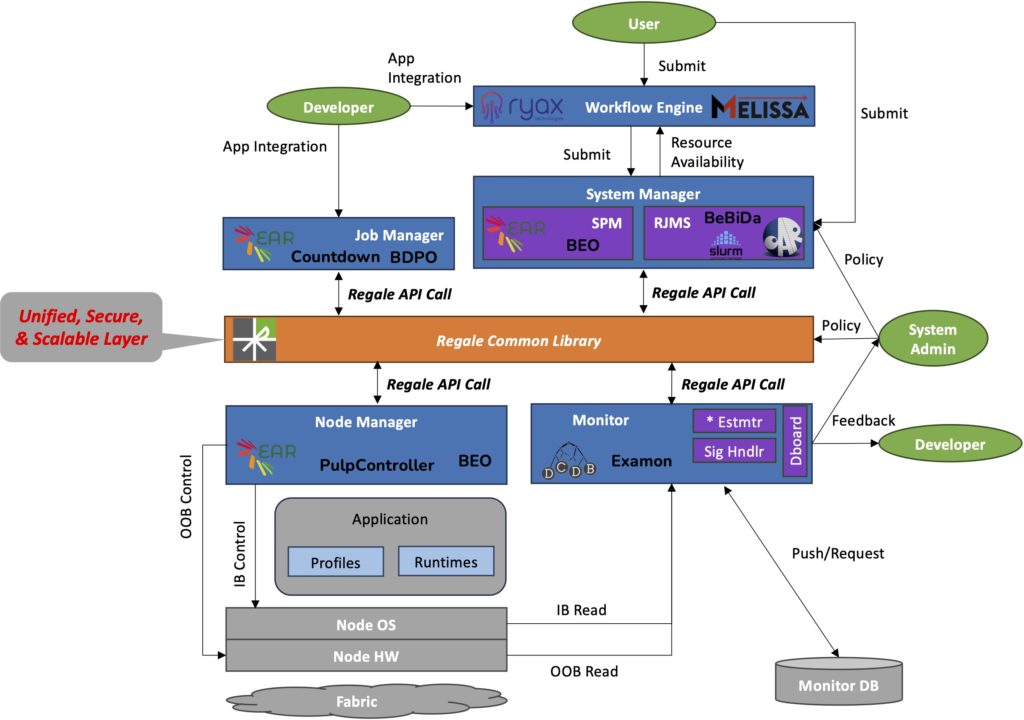The HPC industry arrived in the post-exascale era – more and more High Performance Computers are able to offer over 1018 floating point operations per second. With that, some paradigms of HPC become obsolete, while energy consumption has become one of the key factors for the new systems.
These new HPC systems are very heterogeneous and complex on node level. They leverage very different technologies, such as general-purpose CPUs as well as GPU and FPGA accelerators. For energy efficient computing without significant trade-off on the performance side, applications have to leverage these technologies dynamically. To achieve this, a new software stack is needed.
The ultimate goal of REGALE was to pave the way of next generation HPC workflows to exascale systems. To accomplish this, REGALE defined an open architecture, built a prototype system, and incorporated in this system appropriate sophistication in order to equip supercomputing systems with the mechanisms and policies for effective resource utilization and execution of complex applications. The open architecture is based on a wide range of established, proven software the REGALE project covers.
REGALE Architecture
The REGALE project introduced a common communication layer in the architecture to enable extensible, scalable, and secure resource/power management. This was realized by the REGALE common library along with REGALE standard APIs, implemented over the DDS standard. The REGALE common library bridges different software components via the standard APIs, which operates in a publish-subscribe pattern offered by the underlying DDS middleware. This common layer architecture naturally provides extensibility to include future software components in the loop, while being based on a secure and scalable implementation of the DDS standard.

REGALE & HPC PowerStack
The REGALE architecture/prototyping can be considered as a REGALE version of the PowerStack standard implementation. Before the start of the project, the PowerStack community defined a strawman architecture and its use cases. The REGALE team followed their activities, inherited the standard, pushed it forward, and used it as a milestone for REGALE prototyping and software integrations. The architectural updates and lessons learnt from the integrations are being shared with the PowerStack community, which will reinforce the community-driven standardization effort.
